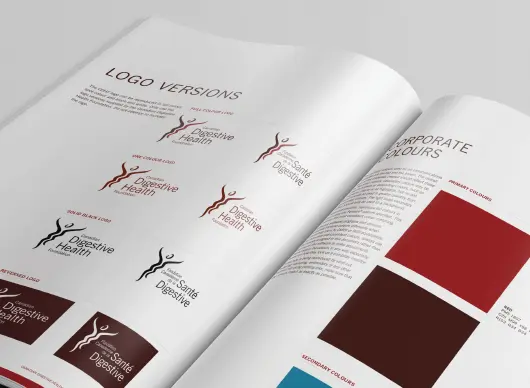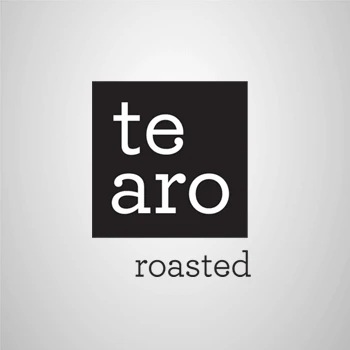What exactly is corporate identity design and why do we need it?
Corporate identity design is the visual and strategic foundation that expresses your organization's personality across all touchpoints. It goes beyond a logo to encompass the complete visual system that communicates who you are, what you stand for, and how you want audiences to perceive you. Within our Experience Thinking framework, identity forms the foundation of brand experience - influencing how people feel about your organization before they even interact with your products or services.
Tip: Audit your current visual materials to identify inconsistencies that might confuse your audience before starting a redesign.
How does corporate identity differ from branding?
Corporate identity is the visual manifestation of your brand - the logos, colors, typography, and design systems that make your brand recognizable. Branding is broader, encompassing your values, personality, positioning, and the complete emotional relationship with your audience. Identity is what people see; branding is what people feel and think about your organization.
Tip: Define your brand strategy and personality traits before creating visual identity elements to ensure authentic expression.
Why is visual consistency important across all touchpoints?
Visual consistency builds recognition, trust, and professional credibility. When your identity appears consistently across websites, business cards, presentations, and physical spaces, it reinforces your brand promise and makes your organization memorable. Inconsistent visual presentation can confuse audiences and dilute your brand message.
Tip: Create a simple visual audit checklist that non-designers can use to maintain consistency across all materials.
What role does corporate personality play in identity design?
Corporate personality drives every design decision - from color psychology to typography choices to visual style. Using Experience Thinking principles, we examine how your audience currently perceives your organization's character traits and design an identity that authentically expresses your intended personality. A playful organization needs different visual treatment than a sophisticated, premium brand.
Tip: List five personality traits you want your organization to embody and verify each design element supports these characteristics.
How do you ensure an identity works across digital and physical applications?
Modern identity systems must be scalable and flexible. We design with the complete Experience Thinking ecosystem in mind - considering how the identity will appear on everything from mobile apps to building signage. This means creating modular systems with multiple logo variations, scalable elements, and clear usage guidelines that maintain visual integrity across all platforms.
Tip: Test your logo at the smallest size it will appear (like social media profile pictures) to ensure it remains recognizable and legible.
What's the connection between corporate identity and user experience?
Identity is often the first impression users have of your organization, setting expectations for the entire experience. A well-designed identity that aligns with your actual service quality builds trust, while misaligned identity can create disappointment. In our Experience Thinking approach, identity must authentically represent the experience people will have with your organization.
Tip: Map your current customer journey and identify where identity elements appear to ensure they support rather than contradict the actual experience.
How does AI impact corporate identity design approaches?
AI tools are transforming how we explore identity concepts and iterate on designs, allowing for rapid prototyping and exploration of multiple directions. However, the strategic thinking behind effective identity - understanding your audience, defining your personality, and aligning with business goals - remains fundamentally human work. AI enhances our design process but cannot replace the strategic insight needed for authentic brand expression.
Tip: Use AI for initial concept exploration and variation generation, but rely on human judgment for strategic decisions and final refinements.
What does your corporate identity design process look like?
Our process follows Experience Thinking methodology, starting with understanding your brand experience goals rather than jumping to visual solutions. We begin with stakeholder interviews, competitive analysis, and audience research to understand your organization's essence. Then we develop strategic concepts before moving to visual exploration, ensuring every design decision supports your authentic brand personality.
Tip: Prepare to share specific examples of organizations whose visual style resonates with your intended brand personality during discovery sessions.
How do you research and understand our organization before designing?
We conduct stakeholder interviews to understand your values, goals, and vision. We analyze your competitive landscape to identify differentiation opportunities. We research your target audiences to understand their preferences and expectations. We also audit your current materials to identify what's working and what needs improvement. This foundation ensures our design decisions are strategic, not just aesthetic.
Tip: Gather examples of communications or materials that your team feels represent your organization well - these provide valuable insights into your preferences.
What role do stakeholders play during the design process?
Stakeholders are essential collaborators throughout our process. We involve you in defining the creative brief, reviewing concept directions, and providing feedback on design refinements. Your industry knowledge and organizational insights inform our design decisions. However, we balance stakeholder input with user research and design expertise to ensure decisions serve your audience's needs, not just internal preferences.
Tip: Designate a primary decision-maker early in the process to streamline feedback and prevent conflicting direction from multiple stakeholders.
How many concepts do you typically present and why?
We typically present three distinct strategic directions that each take a different approach to expressing your brand personality. This provides meaningful choice without overwhelming decision-making. Each concept is fully developed enough to envision how it would work across applications, allowing you to make informed decisions about which direction best serves your goals.
Tip: Consider how each concept aligns with your long-term business goals, not just immediate aesthetic preferences when making your selection.
What happens if we don't like any of the initial concepts?
This rarely happens because we invest significant effort in understanding your needs upfront. However, if concepts miss the mark, we revisit our strategic foundation together. We examine whether the creative brief accurately captures your vision, if new information has emerged, or if we need to explore different directions. We then develop revised concepts based on these insights.
Tip: Provide specific feedback about what elements don't resonate rather than general statements - this helps guide more targeted revisions.
How do you balance creativity with practical business needs?
Every creative decision serves a strategic purpose aligned with your business goals. Using our Experience Thinking framework, we ensure identity design supports your complete customer experience ecosystem. We consider practical constraints like budget, implementation timelines, and internal capabilities while pushing creative boundaries that differentiate your organization in meaningful ways.
Tip: Share any practical constraints or requirements early in the process so creative exploration can happen within realistic parameters.
How long does a corporate identity design project typically take?
Most corporate identity projects take 8-12 weeks from start to final delivery, depending on scope and complexity. This includes discovery and strategy phases, concept development, refinement rounds, and creation of brand guidelines. Rushing the process often leads to solutions that look good but don't strategically serve your organization's needs. Quality identity design requires thoughtful development time.
Tip: Plan for additional time after completion to train internal staff and gradually implement the new identity across all materials.
How do you ensure our identity differentiates us from competitors?
We conduct thorough competitive analysis to understand the visual landscape in your industry and identify opportunities for differentiation. Rather than following category conventions, we focus on expressing your unique brand personality authentically. In our Experience Thinking approach, differentiation comes from aligning your visual identity with your actual organizational strengths and values, not just being different for its own sake.
Tip: Share examples of competitors whose visual approach you want to avoid, along with explanation of why their approach doesn't fit your organization.
What makes an identity scalable for growing organizations?
Scalable identity systems are modular and flexible. We create primary logos, simplified versions, icon treatments, and clear guidelines for various applications. The system includes color palettes, typography hierarchies, and graphic elements that can be applied consistently as your organization grows into new markets, services, or communication needs. Scalability planning prevents costly redesigns as you evolve.
Tip: Consider what new applications you might need in the next three years - international markets, product lines, or service offerings - when reviewing identity flexibility.
How do you measure the success of corporate identity design?
Success measurement depends on your specific goals. We might track brand recognition, perception studies, internal stakeholder confidence, or customer response to new materials. Following Experience Thinking principles, we also measure how well the identity supports your complete customer experience - from initial awareness through ongoing engagement. Success is ultimately about authentic brand expression that supports business objectives.
Tip: Establish baseline measurements of current brand perception before launching new identity to track improvement over time.
Should our identity reflect current design trends or be more timeless?
The best identities balance timeless principles with contemporary relevance. We focus on authentic expression of your brand personality rather than following fleeting trends. However, your identity should feel current and relevant to your audience. Using our strategic approach, we create identities that can evolve and adapt over time without requiring complete overhauls every few years.
Tip: Examine identities of organizations you admire that have remained relevant for 5-10 years to understand the balance between timeless and contemporary elements.
How does budget impact the scope of identity design work?
Budget determines how extensive our identity system development will be, but not the strategic rigor of our approach. Even with smaller budgets, we ensure strong strategic foundation and core visual elements. Larger budgets allow for more applications, detailed guidelines, and implementation support. We work within your constraints while maintaining the quality needed for effective brand expression.
Tip: Prioritize core identity elements first, then plan phased implementation of additional applications as budget allows rather than trying to do everything at once.
What intellectual property considerations should we know about?
We conduct trademark searches and ensure your identity doesn't infringe on existing marks. We also help you understand how to protect your new identity through appropriate trademark registration. All design work is original, and we transfer full ownership rights to you upon project completion. We also provide guidance on maintaining your intellectual property as your organization grows.
Tip: Budget for trademark registration costs beyond design fees, and consider international protection if you plan to expand globally.
How do you handle identity design for organizations with multiple audiences?
Using Experience Thinking methodology, we map the complete ecosystem of your audiences and touchpoints to understand how different groups interact with your organization. We create flexible identity systems that can be adapted for different contexts while maintaining core brand recognition. This might include audience-specific applications or variations that speak to different needs while preserving overall brand integrity.
Tip: Map all your audience segments and their typical touchpoints with your organization to inform identity flexibility requirements.
What do brand guidelines include and why are they important?
Brand guidelines are your identity roadmap, documenting logo usage, color specifications, typography, photography style, and application examples. They ensure consistent implementation across your organization and with external partners. Following Experience Thinking principles, guidelines also explain the strategic reasoning behind design decisions, helping everyone understand not just what to do, but why these choices support your brand experience goals.
Tip: Create a quick reference guide with the most common applications for staff who need immediate guidance without reading full guidelines.
How do you help us implement the new identity across all materials?
We provide prioritized implementation roadmaps starting with the most visible and important materials. We can create templates for common applications, train your internal team, or recommend trusted partners for specific implementations. Our approach ensures smooth transition from old to new identity while maintaining professional appearance throughout the process.
Tip: Start implementation with the materials your audience sees most frequently - website, business cards, and email signatures - before moving to less visible items.
What file formats will we receive and how should we organize them?
You'll receive vector files (AI, EPS), high-resolution rasters (PNG, JPG), and print-ready PDFs organized in clearly labeled folders. We provide files optimized for different uses - web, print, presentations, and merchandise. We also include color specifications for both digital (RGB) and print (CMYK) applications. Proper file organization ensures easy access when you need specific formats.
Tip: Establish a shared digital folder accessible to all staff who might need identity files, with clear naming conventions and usage notes.
How do we train our team to use the new identity correctly?
We provide training sessions covering brand guidelines, common applications, and what to do when faced with new situations not covered in guidelines. We also offer ongoing support during initial implementation to answer questions and ensure correct usage. The goal is building internal confidence with the new system while maintaining the quality needed for effective brand expression.
Tip: Designate internal brand champions who can answer basic questions and maintain quality standards as your team adopts the new identity.
What's your approach to phased identity rollout vs. immediate implementation?
The approach depends on your organization's size, budget, and operational needs. Immediate implementation creates strong market impact but requires significant upfront investment. Phased rollout allows budget spreading and adjustment based on early feedback. Using Experience Thinking, we help prioritize touchpoints based on audience impact and business importance to maximize the effectiveness of either approach.
Tip: Prioritize customer-facing materials over internal applications for maximum impact, regardless of which implementation approach you choose.
How do you ensure quality control during implementation?
We provide detailed specifications, review key implementations, and offer ongoing consultation during the rollout process. We also create approval processes for critical applications and train your team to recognize when professional design support is needed. Quality control prevents the gradual degradation that often happens when non-designers handle identity applications without proper guidance.
Tip: Establish approval workflows for any materials that will be seen by customers or stakeholders before they're produced or published.
What ongoing support do you provide after project completion?
We offer consultation for new applications not covered in original guidelines, annual identity audits to ensure consistent usage, and updates to guidelines as your organization evolves. We also provide training for new staff members and guidance when you work with external partners who need to use your identity. This ongoing relationship ensures your identity remains effective over time.
Tip: Schedule an identity review six months after launch to address any implementation challenges and refine guidelines based on real-world usage.
How does identity design influence content strategy and tone?
Identity and content work together to express your brand personality authentically. Visual style sets expectations that content must fulfill through appropriate tone, voice, and messaging approach. In Experience Thinking methodology, we ensure identity and content strategies align to create cohesive brand expression. A sophisticated visual identity needs refined content, while approachable design requires accessible, friendly language.
Tip: Review your existing content for alignment with new identity direction and update messaging that conflicts with your visual brand personality.
What photography and imagery style should complement our identity?
Photography style should reinforce your brand personality expressed through identity design. We provide guidance on composition, lighting, color treatment, and subject matter that supports your visual brand. This ensures consistency when you work with photographers or source stock imagery. Photography is often the largest visual element in your materials, so alignment with identity is crucial for brand coherence.
Tip: Create a simple mood board of photography styles that align with your identity to guide future photo selection and shoots.
How do you ensure consistency between identity and website design?
We design identity systems with digital applications in mind, considering how elements will translate to web environments. This includes responsive logo treatments, web-optimized color palettes, and typography that works across devices. Following our Experience Thinking approach, we ensure your website design expresses the same brand personality as your identity while meeting user experience requirements.
Tip: Involve your web development team early in the identity process to ensure smooth integration and address any technical constraints.
What role does typography play in extending identity beyond the logo?
Typography is a powerful brand expression tool that appears in every written communication. We select typefaces that reinforce your brand personality and provide hierarchical systems for different content types. Good typography guidelines ensure consistent brand expression across all written materials, from business cards to reports to digital interfaces, extending your identity far beyond logo placement.
Tip: Ensure your chosen typography system includes fonts that are accessible to staff for common applications like presentations and documents.
How do color choices impact user perception and accessibility?
Color psychology influences how audiences perceive your organization before they read a single word. We select colors that support your intended brand personality while ensuring accessibility compliance for digital applications. Color systems also provide flexibility for different contexts - primary colors for main applications, secondary colors for variety, and neutral colors for supporting information.
Tip: Test your color palette across different devices and lighting conditions to ensure it maintains impact and legibility in real-world use.
What graphic elements help extend identity across applications?
Graphic elements like patterns, icons, illustration styles, or photographic treatments create visual cohesion beyond the logo. These elements provide designers with tools to create variety while maintaining brand recognition. In our Experience Thinking approach, we ensure these elements feel authentic to your brand personality and serve functional purposes rather than being purely decorative.
Tip: Choose graphic elements that can be easily applied by non-designers to maintain consistency across all organizational communications.
How does strong identity design impact customer experience?
Strong identity creates immediate recognition and sets clear expectations for the experience customers will have. When identity authentically represents your organization's capabilities and values, it builds trust and attracts the right audience. In our Experience Thinking framework, identity is the visual promise that must be fulfilled through every subsequent interaction - from content quality to product performance to service delivery.
Tip: Map how customers first encounter your identity and ensure that initial impression aligns with the experience they'll actually receive.
What's the connection between identity and employee engagement?
Employees take pride in representing organizations with strong, professional identities. Clear visual standards reduce confusion and decision fatigue when creating materials. When identity authentically reflects organizational values, it reinforces culture and helps employees understand and express what makes your organization special. Strong identity becomes a tool for internal alignment as much as external communication.
Tip: Involve key employees in the identity development process to build ownership and ensure the final design resonates with internal culture.
How do you measure long-term brand recognition improvement?
Brand recognition can be measured through awareness studies, recall testing, and tracking how quickly people recognize your organization across different contexts. We also monitor qualitative feedback about brand perception and professional appearance. Using Experience Thinking principles, we look at how identity supports broader experience metrics like customer satisfaction, referral rates, and stakeholder confidence.
Tip: Conduct baseline brand recognition research before launching new identity to accurately measure improvement and impact over time.
What business outcomes can strong identity design influence?
Professional identity design can influence customer trust, employee confidence, stakeholder credibility, and competitive differentiation. These factors can impact sales cycles, partnership opportunities, recruitment success, and market positioning. While identity alone doesn't drive business results, it provides the foundation for all other experience elements to build upon.
Tip: Track business metrics that might be influenced by brand perception - like sales cycle length or partnership inquiry quality - to understand identity's broader impact.
How does identity design support digital marketing effectiveness?
Consistent, professional identity improves marketing material performance by building recognition and trust. Strong visual systems provide templates and guidelines that make marketing creation more efficient while maintaining quality. Identity also supports social media presence, website credibility, and advertising effectiveness by creating cohesive brand expression across all digital touchpoints.
Tip: Create identity application templates for common marketing materials to ensure consistency while empowering your team to create professional communications quickly.
What role does identity play in service experience design?
Following Experience Thinking methodology, identity influences service experience through environmental design, staff materials, customer communications, and digital interfaces. Visual consistency across service touchpoints reinforces professionalism and builds confidence. Identity also provides staff with tools to represent your organization consistently, supporting the personal interactions that define service quality.
Tip: Audit all customer service touchpoints to ensure identity is applied consistently and professionally across the complete service experience.
How do you ensure identity remains relevant as markets evolve?
We design identity systems with built-in flexibility for evolution rather than revolution. This includes modular elements, adaptable applications, and strategic foundations that can accommodate growth. Regular identity audits help identify when updates are needed versus when consistency is more valuable. Our Experience Thinking approach ensures identity changes support rather than disrupt the complete customer experience ecosystem.
Tip: Schedule annual identity reviews to assess performance, identify needed updates, and plan any evolution before inconsistencies develop.












